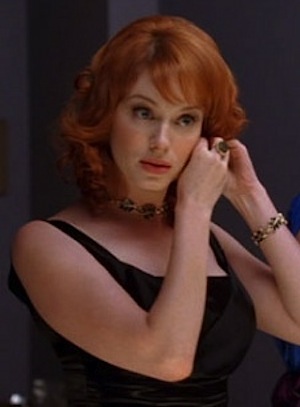Antoinette Matlins has been writing the definitive buying guides for gems and jewelry for the past two decades and every one of her books has a section on how to use a jewelry loupe properly. First step is to start with a good loupe. I’m shopping for a better one myself, so I asked her what to look for.
There are a lot of jewelry loupes out there. Which work best for examining gemstones?

A proper loupe for gemology or jewelry has to be a ten-power (10x) triplet – three lenses fused together to eliminate distortion at the edges and color fringing. You know those big magnifying glasses you used to see elderly people use? Anything viewed through those gets blurrier and blurrier the further you get from the center. A triple-layered lens corrects that.
I have a generic loupe that’s labeled a triplet but I’ve heard many so-called triplets are actually doublets. Is that true?
Absolutely. I see doublets labeled all the time as triplets.
How can I tell if a loupe is really a triplet?
You can tell the difference by the amount of distortion at the edges or color fringing. To test a loupe, hold it a half-inch from newsprint and make sure everything is in focus from one edge to another. Then hold it over flat white paper. If it takes on a beige tone, it’s not a triplet.
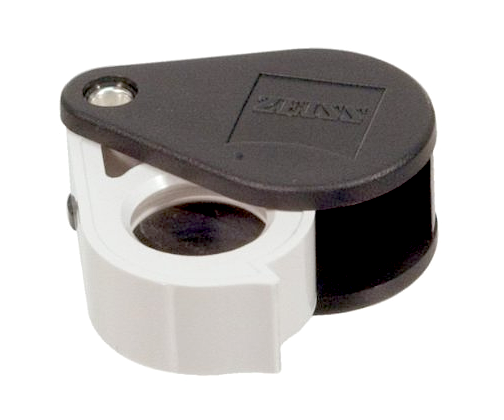
How much should I expect to spend?
The reality is that you cannot buy a proper, absolutely correct 10x triplet loupe that is exactly what it should be for under $50. When you see them advertised for less, they’re not fine, properly-corrected loupes.
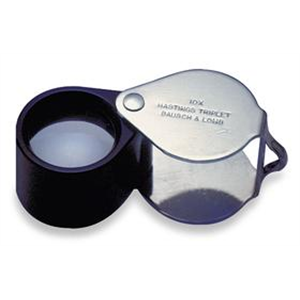
Which brand do you recommend?
Bausch + Lomb has a wonderful reputation for top-of-the-line loupes. There are also high-quality loupes made by Nikon and Zeiss but they can exceed $100. I don’t know that you need to spend that kind of money.
Bausch + Lomb offers a very fine, optically-correct gemological loupe for about $50 which is, in my opinion, the best value for the money. Because it has a smaller diameter in the loupe area, some people complain that you have to move it around to take everything in. But you’re looking at – or for – microscopic things inside or on the surface of a stone. A smaller diameter is actually better for gemological purposes because it helps you focus more critically and precisely.
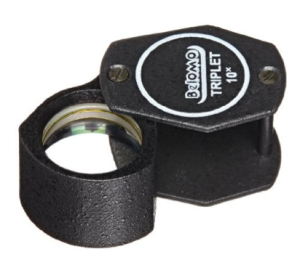 Editor’s note 11/18/14: This is great advice. At the most affordable end, the BelOMO triplet loupe is worth considering as well. Like the Bausch & Lomb, it has a reputation for accuracy and retails for less than $50. BelOMO is made of steel and is a bit larger and heavier than the tiny B&L.
Editor’s note 11/18/14: This is great advice. At the most affordable end, the BelOMO triplet loupe is worth considering as well. Like the Bausch & Lomb, it has a reputation for accuracy and retails for less than $50. BelOMO is made of steel and is a bit larger and heavier than the tiny B&L.
Update 8/26/16: Prices have come down since this posted. Nikon 10x triplet loupes generally run $85-95 on Amazon, but occasionally show up for less than $60, shipping included. Nikon built its reputation on the quality of its camera lenses. But if you have a bit more to spend and plan to use your loupe on high-end goods, you might want to spring for the German-made Zeiss. Zeiss made its name on high-performance lenses used for surgical microscopes and ophthalmology. Lenses on their loupes have a coating that lends a brighter view. A Zeiss Optics D40 10x Aplanatic loupe can be found on Amazon now for about $100, shipping included.
In your Gem Identification book, you talk about a dark-field loupe. What’s the purpose of that?
The gem identification book explains, in layman’s terms, the instruments you need, how to use them properly, and what they will reveal regarding treatments, fillers, synthetic vs. natural. At a minimum, you’ll need a particular type of 10x loupe, a specially modified dark-field loupe, a UV lamp with both long-wave and short-wave output, and a diamond “type” spotter.
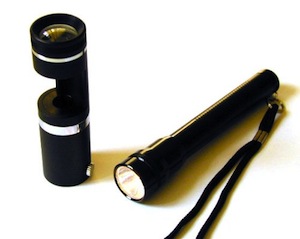 How does the dark-field loupe work?
How does the dark-field loupe work?
I use it with a little black cylindrical thing with background light. When examining a piece of jewelry with this, you have light coming directly through the bottom of the stone, coming in laterally. That is the fastest, easiest way to spot lead-glass fillings in diamonds. I can have people who’ve never held a loupe or examined diamonds and within 10 minutes they’re spotting every fracture-filled diamond I have in the room. It’s indispensable.
Any recommendations for dark-field loupes?
You can use any dark-field loupe, specially modified. I recommend you use older types if you’re looking at a ring or brooch or larger piece, or else there might not be any space in the opening to put your stone to actually look at it. The setting itself may block it so the modified loupes allow more flexibility in terms of maneuvering the jewelry. Almost any jewelry supply house will have them. My publisher Gemstonepress.com sells a good one, not that expensive, not dirt cheap, but around $50.
Want to read more like this? Subscribe and stay in the Loupe!
Related posts:
Beware of glass-composite rubies: how to spot them
What you need to know about jewelry hallmarks
How to photograph jewelry: tips from the pros


